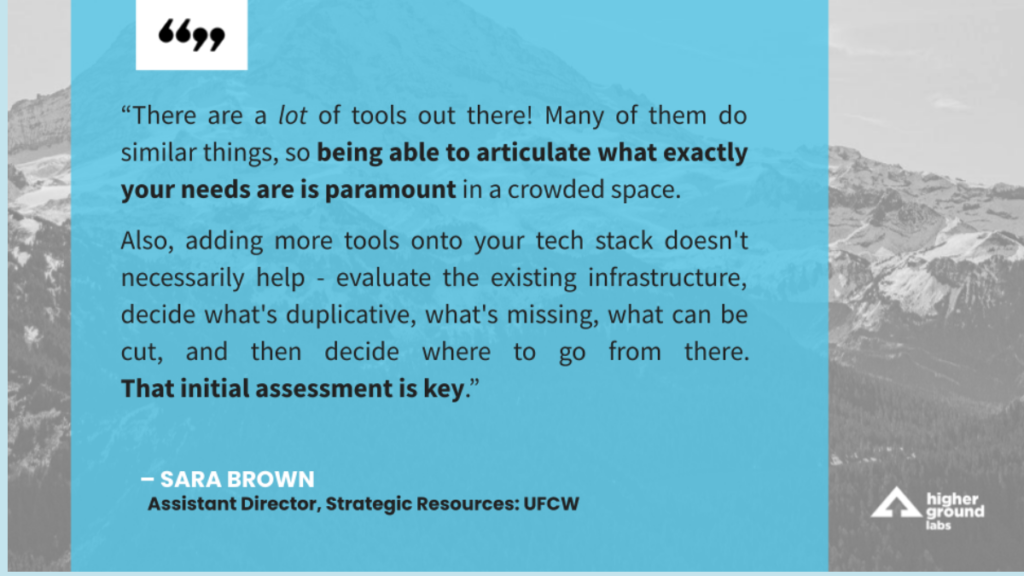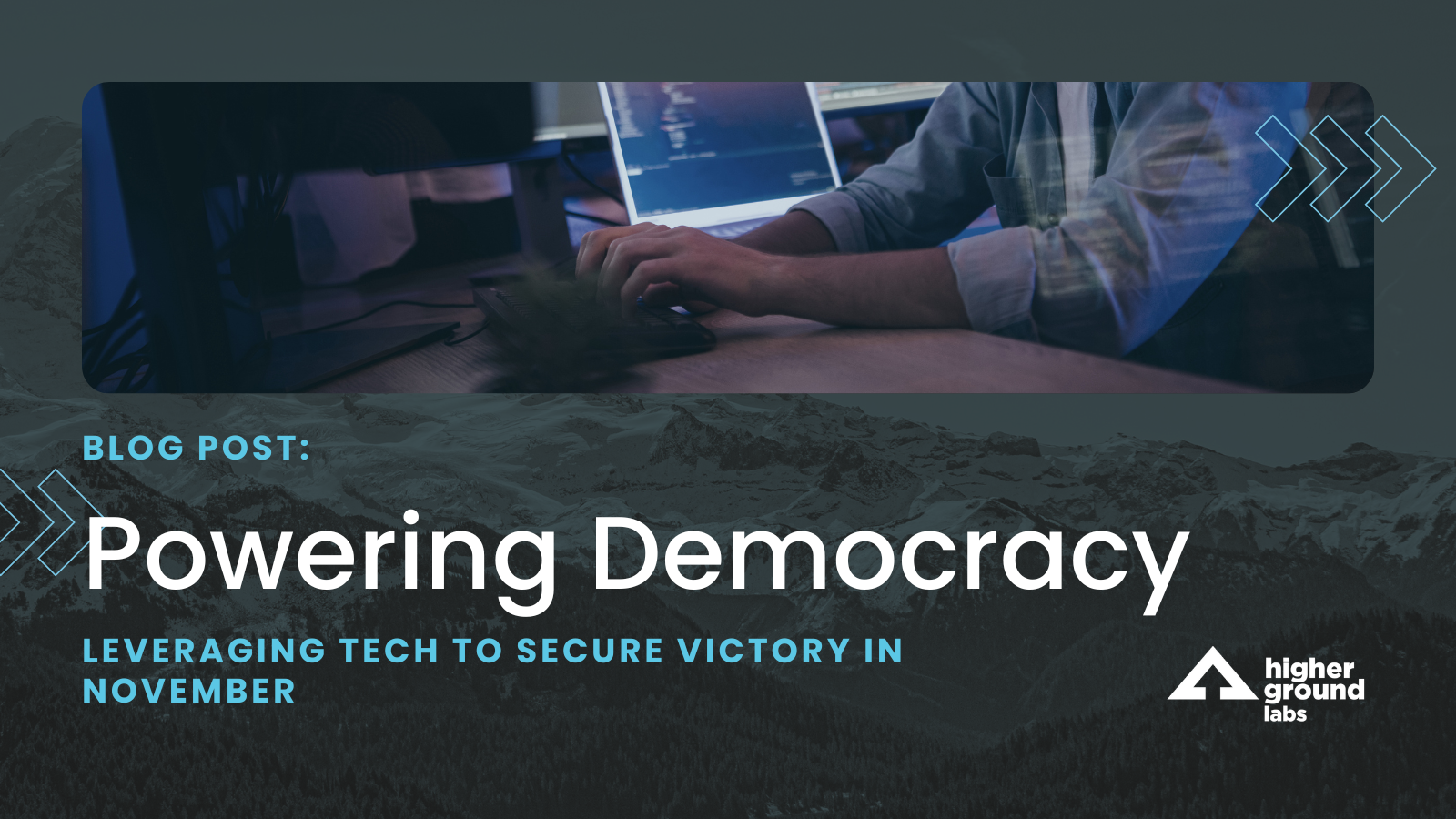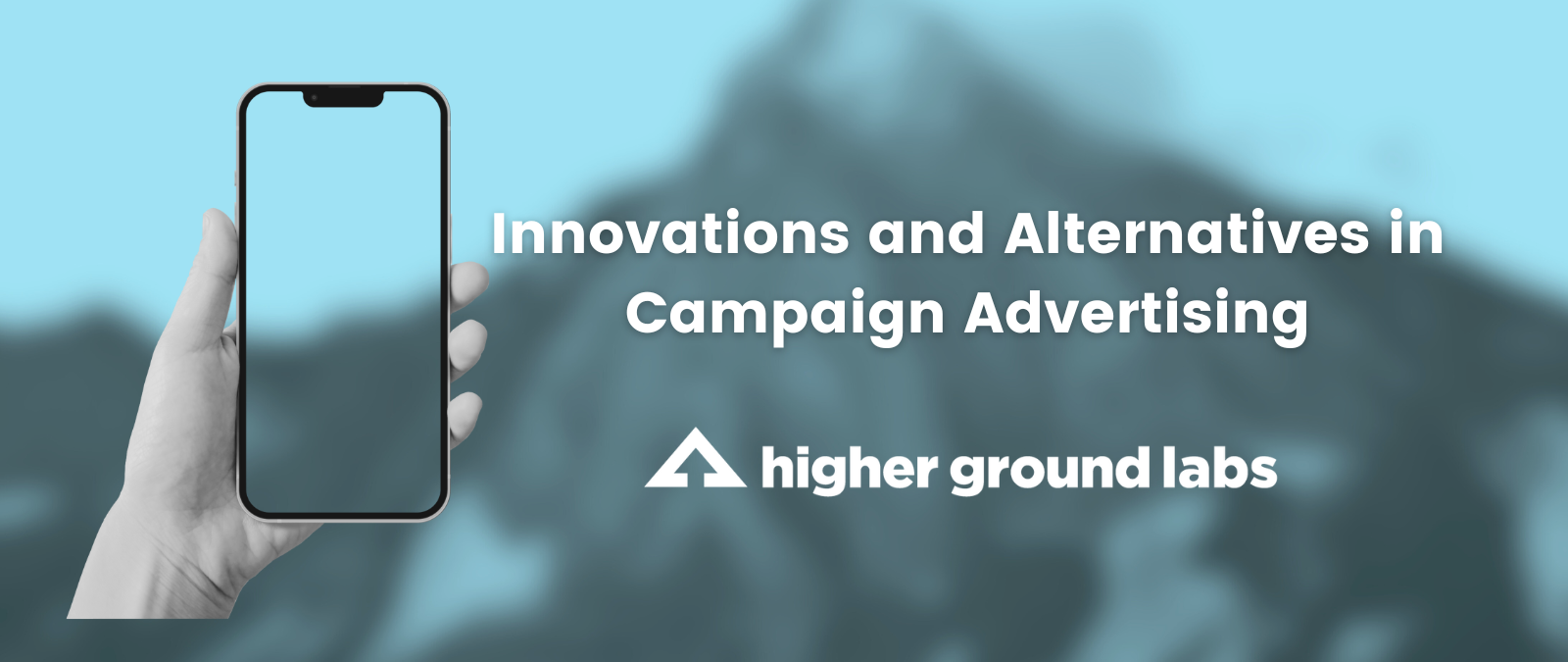Howdy, campaign tech buyer.
First of all, congrats! It’s a big deal to be handed the keys to drive a strategic decision for your organization or campaign. You are in charge of selecting the technology your campaign will run on. Your choice will determine your campaign’s data flow, your volunteer experience, your social media presence and your ad optimization. Tech decisions are easily overlooked but we all know they are critical to building a steady campaign infrastructure. Don’t panic… We’re here to help. To start, we compiled some advice for navigating these choices.
If you don’t yet have a purchasing process in place, here’s our recommendations to support you as you lead a successful tech purchasing process:
- Prepare: Establish your timeline, decision-making process, stakeholders, and goals.
- Communicate to your stakeholders: Make a clear ask for each stakeholder to give input and sign off on the goals and decision-making framework (or to agree to not participate (and that’s ok too!), you will instead update them). Just make sure everyone knows what to expect and when. Set a habit of regular email updates or meetings with notes sent out to get everyone on board with the process and timeline.
- Define your search: Once you have your big picture goals outlined, divide up the types of tool functions you will need (CRM, relational, texting (if so, broadcast, SMS, P2P, or both), dialer, digital ad & influencer resources, analytics & dashboards, GOTV, messaging, merchandise, internal comms, etc.). A spreadsheet can help keep the info you collect organized.
- Decide on needs & nice-to-haves: For each function, create an estimated scale, timeframe, # of users, budget and product preferences: needs / nice-to-haves / not important. List everything here: integrations, UX, support help, and be realistic. Remember: Not everything can be non-negotiable because there is no perfect tool. Knowing what you can and can’t live without gives you more options to be flexible for other constraints like budget and data access. Is having multiple products/functions covered by one contract important for your campaign? List that here too. Run this list by all of your stakeholders, and make sure you get their signoff. The earlier you do this, the easier everything else will be.
- Start doing research. Check out the HGL Portfolio & blog spotlights, Arena Digital Tools library, and progressive tech communities like ProgressPhiles for tool lists, leads, and reviews. Analyst Institute case studies can help you see data on efficacy of different digital strategies but may be more tool agnostic.
- Connect with vendors: Reach out to the companies that have the strongest match between your needs and their product for a demo and pricing conversation. Make sure to get as clear of a picture as possible on how the product meets your needs whether it’s data integrations, ease of use for volunteers, or customization functionality. Get clear on what’s live in the product and what’s on the roadmap. Be specific about your needs with their company rep so they can get you a clear answer to take to your stakeholders. If a particular stakeholder is key, invite them to the call as well.
Online research and reportbacks from previous users can be helpful data points, but remember that products are always changing and every use case may be unique! - Refine options: once you have a list of the companies who meet your needs for each product set, step back and look at your tech stack options as a whole. Is there duplication or other places for efficiency and decreased cost? Can the tools integrate in a way that works for your campaign and volunteer workflows? Instead of sharing each tool option with stakeholders, try to organize your tech stack options as a whole when you can and present these options as a holistic menu (and budget) versus one-offs.
- Meet with stakeholders for final rounds of input. Remember to guide the group toward the best collective decisions. People may have tools they are loyal to or trust deeply. This is important too. Previous experience can be very efficient, but it does need to work within the larger selections and needs. Don’t forget to thank stakeholders for their participation and input during the decision-making process. It can be hard as a group to make decisions, so make sure the final decision-maker is clearly defined from the start.
- Decide and set up implementation timelines: Congrats! Once you have made your decisions, you are ready to move into contracting and implementation. Leave yourself plenty of time for finalizing pricing, contracts, and legal redlining processes if you have them. Set a target date for training and implementation, and try to stagger these where possible so there is time and ownership for each tool.
- Set success metrics for each tool (and the larger program) with your stakeholders. Set a monthly reminder to reflect on these metrics and make sure you are getting the most value out of your investment. The most important thing about using campaign tech is just that: to USE it! Make sure your tool owners are maximizing usage, finding value, and driving success for the campaign.
- Celebrate milestones: keep enthusiasm high with your stakeholders by being consistent. You may not need to prep and share a formal monthly report on each tool, but do keep folks in the loop on overall performance: share your stats, dashboards, heart-warming stories, or other victories to build confidence in your decisions and programs! Take notes on Plus/Minus/Delta during the campaign and after to refine feedback and continue to fine-tune your strategy. Remember, it’s ok if everything doesn’t work perfectly. It’s impossible to perfectly predict the future, just be confident in your role of making the best decision for your team with the information that you have. On the flip side, if your campaign innovated on a tool or piloted a new strategy, consider sharing your methodology in debriefs, conferences like Netroots, or via blog posts to share new best practices and learnings.

Have another tip for selecting campaign tech? Let us know!
Email us at info@highergroundlabs.com or @HigherGroundLab on Twitter.




